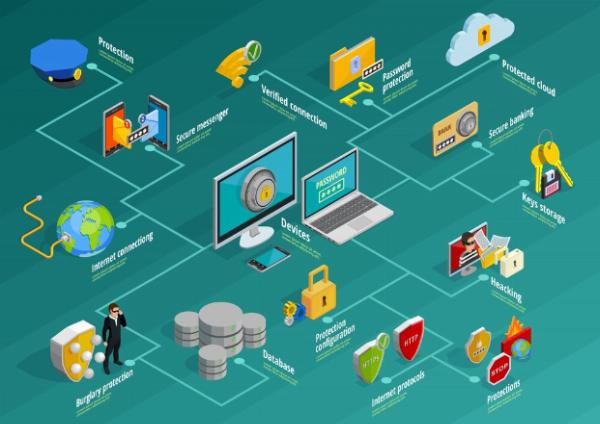 Guaranteed SEO Boost: Triple Your Rankings with Backlinks starting at 5$
Guaranteed SEO Boost: Triple Your Rankings with Backlinks starting at 5$
Building a Netflix-Like Streaming App: A Step-by-Step Guide
Written by tracey » Updated on: September 21st, 2024
In the digital age, streaming platforms like Netflix have revolutionized how we consume content. With the advent of fast internet and the rise of on-demand viewing, consumers have embraced streaming services as a dominant entertainment medium. If you're thinking about developing a streaming app like Netflix, you're not alone. Many entrepreneurs and businesses see the potential in creating a similar platform. This article will provide a step-by-step guide to building a Netflix-like streaming app, exploring essential components, and answering common questions like how to create a streaming app like Netflix.
1. Research and Market Analysis
Before diving into development, thorough market research is crucial. Understanding the demand for specific content, identifying your target audience, and analyzing competitors like Netflix, Hulu, and Amazon Prime Video are essential first steps.
Identify your niche: While Netflix covers a broad range of genres, you could focus on a particular genre or audience, like indie films, documentaries, or family-friendly content.
Study user preferences: Learn from Netflix’s success. Users want personalized recommendations, smooth streaming experiences, and content that resonates with them.
Understand regional trends: Streaming preferences can vary widely across different regions. For instance, what works in the U.S. might not work in Europe or Asia.
2. Decide on Features and Functionality
A Netflix-like app requires a range of core features to offer a seamless experience. Below are the essential features you'll need:
User Profiles and Authentication
Users should be able to sign up, create multiple profiles under one account, and log in securely. Like Netflix, you'll also need social media login integrations for convenience.
Advanced Search and Filters
Users should have access to robust search capabilities, filters for genres, actors, release dates, and user ratings to help them discover new content.
Content Library
Your app will require an extensive library of movies, TV shows, and documentaries. Licensing content from producers or creating original content will be a key factor.
Recommendations and AI-Based Suggestions
One of the standout features of Netflix is its recommendation engine, which uses AI to offer personalized suggestions based on user behavior and preferences.
Video Player
A smooth, reliable, and feature-rich video player with features like adjustable playback speed, subtitles, and the ability to download content for offline viewing is necessary.
Payment Gateway Integration
To offer a subscription model like Netflix, integrating secure payment gateways that support multiple payment methods, including credit cards, PayPal, and others, is critical.
Multiple Device Support
Your app should work seamlessly across multiple devices, including smartphones, tablets, desktops, and smart TVs.
Push Notifications
Push notifications can alert users about new content, upcoming releases, or personalized recommendations.
User Reviews and Ratings
Allow users to rate and review content to help others in their selection process.
Parental Controls
Adding parental controls ensures your platform is family-friendly and allows users to restrict inappropriate content from children.
3. Choose the Right Technology Stack
Choosing the appropriate technology stack is one of the most critical steps in creating a streaming app like Netflix. Your tech stack will determine how well the app performs, scales, and handles user traffic.
Frontend Development: Technologies like React.js or Angular.js are great for building a responsive and intuitive user interface.
Backend Development: You can use Node.js, Django, or Ruby on Rails for the backend, which will handle the business logic, server communication, and user management.
Database: Netflix uses NoSQL databases like Cassandra, which is highly scalable. You might consider PostgreSQL, MongoDB, or MySQL depending on your needs.
Content Delivery Network (CDN): A CDN is essential for fast content delivery across regions. Services like AWS CloudFront or Akamai are popular choices.
Streaming Protocols: HTTP Live Streaming (HLS) and Dynamic Adaptive Streaming over HTTP (DASH) are widely used to ensure seamless streaming experiences.
Cloud Storage: For hosting your video files, platforms like Amazon S3 or Google Cloud Storage are ideal for scalable storage solutions.
4. Design and User Experience
The user interface (UI) and user experience (UX) design play a crucial role in the app's success. A clean, intuitive, and user-friendly interface can improve user engagement and retention.
UI Design: Follow Netflix’s minimalist approach. Users prefer an interface where content discovery is easy. Make the layout simple, but visually appealing, with smooth transitions.
Content Organization: Categorize content into genres, trending lists, and personalized recommendations.
UX Testing: Before launching, conduct extensive UX testing to identify potential pain points in navigation, content discovery, and overall user flow.
5. Content Licensing and Legal Considerations
Netflix has spent billions on securing rights for popular movies and TV shows, and if you're building a similar platform, content licensing will be a crucial step.
License Popular Content: Licensing from content creators, producers, or movie studios can bring in popular titles that attract users.
Create Original Content: Following Netflix's strategy, producing original content can differentiate your platform.
Copyright and Legal Compliance: Make sure your platform adheres to copyright laws, especially regarding licensed content. Working with a legal team is essential for avoiding legal challenges.
6. Monetization Strategy
Netflix operates on a subscription-based model, but there are other monetization strategies you can consider:
Subscription Model
The most common model for a streaming app like Netflix is subscription-based. You can offer various plans, such as monthly or annual subscriptions, with different tiers (basic, premium, etc.).
Ad-Based Model
Some streaming services use advertisements to generate revenue. You can offer a free version of the app with ads and provide an ad-free premium subscription option.
Pay-Per-View
For premium content like live events, you could offer a pay-per-view option, charging users per title or event they wish to watch.
7. Development Costs and Timeline
Building a Netflix-like streaming app requires a substantial investment. To give you an idea of the crypto exchange app development cost, we can use a similar analogy for your streaming platform.
Development Costs
The cost of developing a Netflix-like app will depend on several factors:
Features and Complexity: Advanced features like AI recommendations, multi-device support, and a robust video player will increase costs.
Development Team: Whether you hire an in-house team or outsource the project to a development agency can impact the price.
Technology Stack: The choice of cloud providers, databases, and CDNs will add to the cost.
Content Licensing: Licensing popular titles can be expensive. Producing original content is an even bigger investment. On average, the cost of building a Netflix-like app ranges from $100,000 to $500,000 or more, depending on the above factors.
Development Timeline
The development timeline can vary based on complexity. A basic version might take 6–12 months, while a more feature-rich app could take up to 18 months or longer.
8. Testing and Deployment
Once your app is developed, it must undergo rigorous testing to ensure everything works as expected. Testing should cover:
Functionality Testing: Ensuring all features work correctly across devices.
Performance Testing: Checking how the app handles heavy user loads.
Security Testing: Ensuring that user data, including payment information, is safe from breaches.
Once testing is complete, you can deploy your app on various platforms like Android, iOS, and Smart TVs.
9. Marketing and User Acquisition
Launching your app is just the beginning. You'll need an effective marketing strategy to attract users and keep them engaged. Key strategies include:
Social Media Campaigns: Leverage platforms like Facebook, Instagram, and Twitter to build excitement around your app launch.
Influencer Marketing: Collaborating with influencers in the entertainment space can help you reach a wider audience.
Referral Programs: Offering incentives for users to invite their friends can help you grow your user base quickly.
10. Maintenance and Future Updates
Once your app is live, continuous maintenance is essential. You'll need to fix bugs, update features, and add new content regularly to keep users engaged. Monitoring performance and user feedback is key to long-term success.
Conclusion
Building a Netflix-like streaming app is no small feat, but with the right approach, it’s possible to create a successful platform. From understanding how to create a streaming app like Netflix to choosing the right technology stack and monetization strategy, each step plays a crucial role in the app’s success. While the crypto exchange app development cost analogy gives us an idea of the financial commitment, remember that investing in quality design, content, and technology is essential for long-term growth. By following the steps outlined in this guide, you can build a powerful streaming platform that caters to the growing demand for on-demand video content.
Disclaimer:
We do not claim ownership of any content, links or images featured on this post unless explicitly stated. If you believe any content or images infringes on your copyright, please contact us immediately for removal ([email protected]). Please note that content published under our account may be sponsored or contributed by guest authors. We assume no responsibility for the accuracy or originality of such content. We hold no responsibilty of content and images published as ours is a publishers platform. Mail us for any query and we will remove that content/image immediately.
Copyright © 2024 IndiBlogHub.com. Hosted on Digital Ocean







